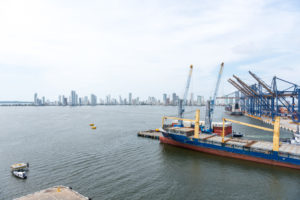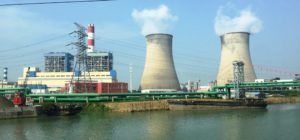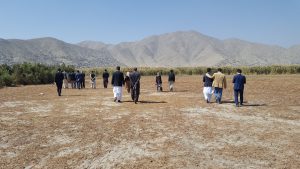his is the second article in a special series examining China’s role in promoting peaceful and sustainable development in Colombia in the context of the peace process
Colombia is at an exciting crossroads. Its recent steps to end decades of conflict have coincided with the beginning of the end of the fossil fuel era. This shift brings with it opportunities, and China can be a key partner in a new age of peaceful and sustainable development for the country.
Colombia’s historic peace process with the guerrilla group the Revolutionary Armed Forces of Colombia (FARC) made some important moves forward in August, including the launch of their new political party, the Revolutionary Alternative Force of the Commons. This step signals FARC’s integration into the democratic system and marks a critical new phase in the transition towards a new post-conflict era following the signing of a peace accord in November 2016.
But if the accord is to lay the foundation of a strong and lasting peace then it must deliver justice and reparations to victims, integrating 7,000 former guerrilla fighters into civic life, strengthening security and institutional capacity across the country, and bringing rural territory formerly controlled by FARC into Colombia’s economy.
Opportunities in the post-conflict era
Rural areas will be the centre of attention in Colombia’s post-conflict phase. The government estimates that US$43 billion of investment is required to implement the peace agreement over the next 15 years. Of this, 85% will be directed at rural reforms, such as formalising land tenure, stimulating economic activity, and improving the production and trade of goods, as well as reducing the high levels of poverty in these regions.
The National Planning Department claims the peace agreement could help Colombia expand its tourism sector and make the country a global leader in food production. Foreign investment is expected to triple, particularly in agriculture, infrastructure, tourism, and other services.
This will be important in fostering technology transfer and innovation, helping boost productivity, and creating more efficient economic development. But it can also have negative impacts on rural communities, causing friction over access to natural resources, such as water and land, and expanding deforestation, leaving more poverty and desolation behind.
Investments in the post-conflict era – particularly in affected rural areas – will need to be carefully balanced to protect the high biodiversity of areas encompassing 42% of Colombia’s forests and 50% of national natural parks. This wonderful natural capital is currently threatened, mostly from deforestation linked to activities such as coca growing and mining.
As new foreign investments flow into these regions, high-quality standards that place the protection of local communities and ecosystems at their heart, must be enforced in order to avoid backsliding on efforts to secure a stable peace.
China’s growing global investment
Among the countries looking to invest in Colombia is China. Li Nianping, China’s Ambassador to Colombia recently expressed China’s interest in expanding investments in infrastructure and telecoms. Currently, Chinese investment is low in comparison with most Latin-American countries but it is on the rise. China is already the second largest trade partner for Colombia after the US. The majority of investment is in agriculture, coal power and oil (including Sinochem-owned Emerald Energy in the Colombian Amazon).
A report on Chinese investments in Colombia indicates that some of these projects failed technical and contractual standards, as well as caused environmental and social conflicts. More recently, in 2015 China also presented a project to develop an industrial park in Buenaventura – Colombia’s largest port in the Pacific – as well as agriculture and road projects in the regions of Orinoquia and the Altillanura. These are key areas identified for development now that conflict has ended because access was limited by the presence of FARC.
Such investments from China could triple in the coming years. This means it’s essential that the government secure a minimum baseline for environmental and social standards, but also go beyond this by demanding cutting-edge sustainable practices and the transfer of clean technologies. This is especially relevant when it comes to China. It is the world’s biggest producer of renewable energy and is expected to install a third of the world’s wind, solar and hydroelectric power between 2015 and 2021. China can be an ideal partner to support development of clean technologies across Colombia, including in sectors where both countries have expressed interest in increasing investments, such as in agriculture.
According to Colombia’s minister of Mines and Energy, more than 400,000 people lack access to energy in areas affected by the country’s more than 60 year-long conflict, and many others rely on dirty and expensive diesel generators. Reliable and widespread energy access is key to building prosperity and enhancing quality of life.
The serious development of renewable energy in post-conflict Colombia – both distributed and grid-connected – could help build a market. Colombia is currently lagging behind its Latin American regional competitors, as a recent Bloomberg NEF study showed.
Colombia has much to gain from the global clean technology transition as it opens new frontiers following the peace agreement. In order to seize the opportunity to embrace a sustainable future, it is essential that it attracts new investments in this area from countries like China and that it builds relationships with new international partners around high standards of economic, social and environmental sustainability.






![View of Pul Doda from the road above, a half submerged structures of a mosque, a temple and a few houses can be seen [image by: Majod Maqbool]](https://dialogue.earth/content/uploads/2017/10/A-view-of-the-Pul-Doda-area-from-the-road-above.-The-half-submerged-structures-of-a-mosque-a-temple-and-a-few-houses-can-be-seen-here.-300x184.jpg)

